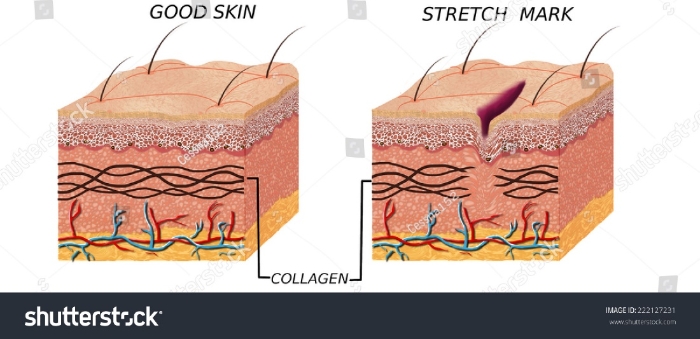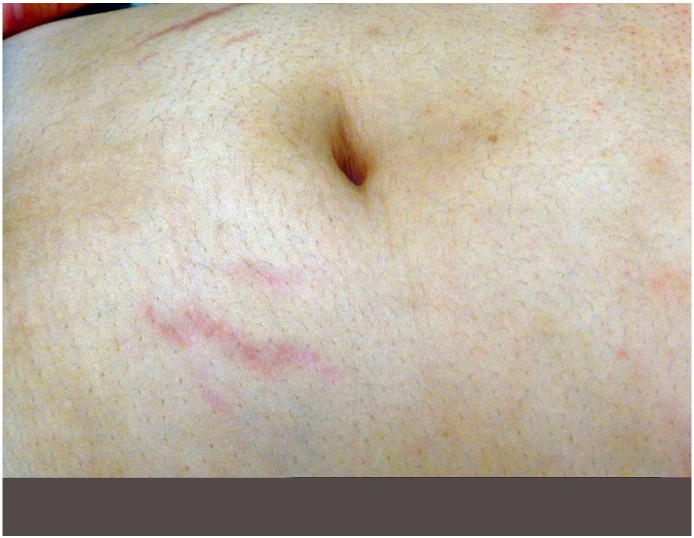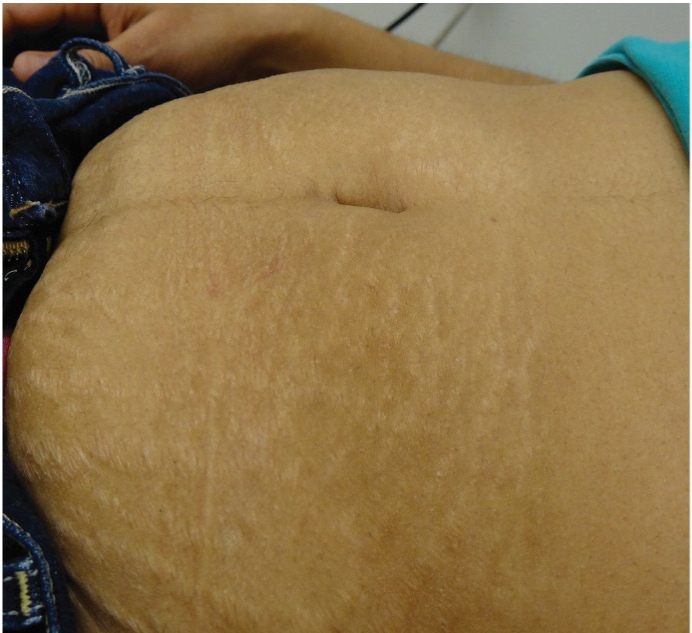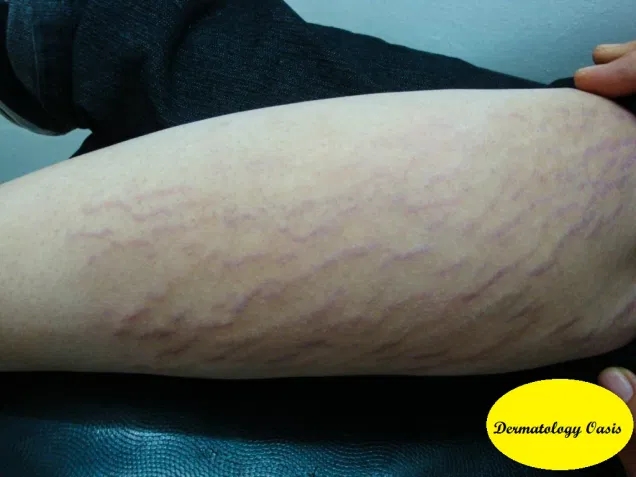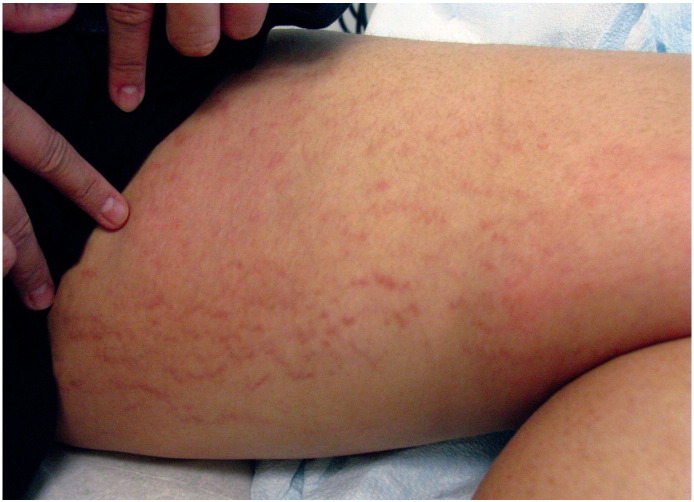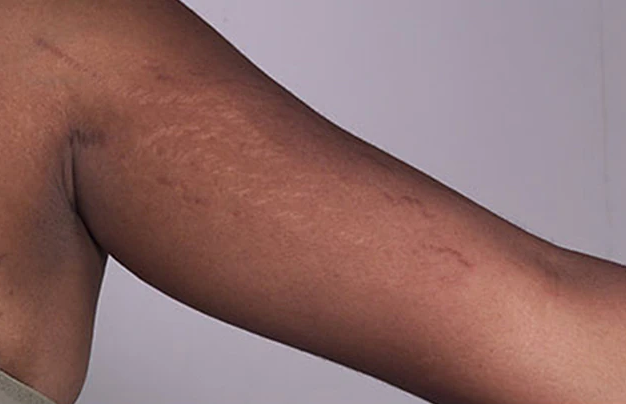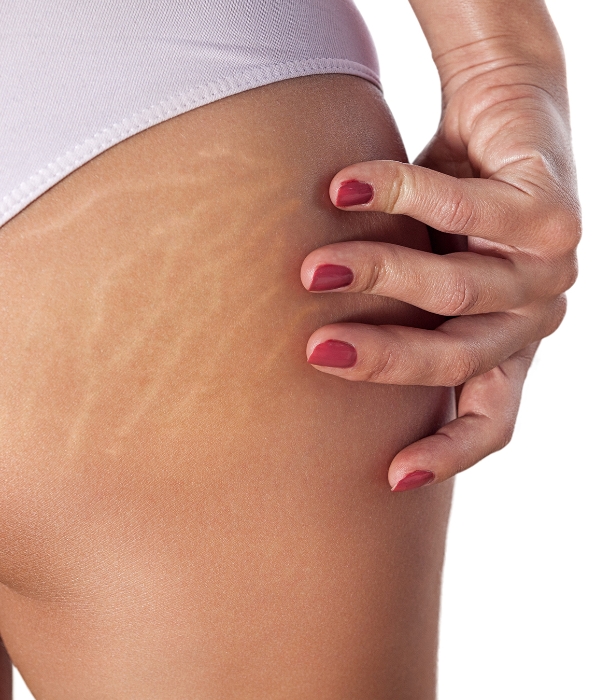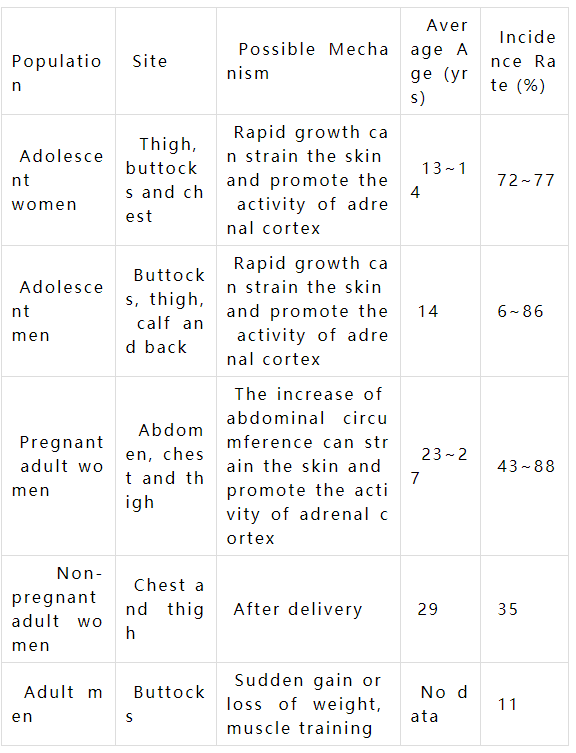Why do You have Obesity lines Even If You Lose Weight
Obesity lines, more accurately known as striae distensae or striae atrophicans, has several other “nicknames”.
As the saying goes, if you don’t lose weight in May, you may regret vainly in June. However, when I managed to lose weight and was ready to show my legs and waist happily, I suddenly found that my thighs and abdomen were crawling with stripes, which were as scary as small snakes.
I looked up on the Internet, and it turned out that there were obesity lines. Suddenly I felt that the world was too unfriendly to fat people, and the joy of losing weight suddenly disappeared for the most part.
This begs the question: what the hell are obesity lines? Why did it pop out to remind me that I used to be fat?
Obesity Lines with Multiple Identities
Obesity lines, more accurately known as striae distensae or striae atrophicans, has several other “nicknames”, such as stretch marks and growth lines, but they are essentially the same thing, though differentiated according to different populations in which they occur.
Generally speaking, striae distensae that occur in the abdomen and buttocks, etc. after pregnancy are called stretch marks. Striae distensae that occur during puberty are called growth lines. While obesity lines mostly refer to striae distensae that occur after the weight is gained or lost rapidly.
Stretch marks on the abdomen. Image source: NCBI
How did Striae Distensae Come into Being?
In spite of the lack of a definite conclusion currently, it can be easily seen that its presence has something to do with rapid changes of the body (mainly weight and height, etc.), such as the rapid expansion of abdomen during pregnancy and rapid growth of adolescents during puberty.
Studies have reported that when the body grows rapidly, the skin will strain. In this case, if the collagen and elastic fibers in connective tissues (which are required to keep the skin tight) can’t keep up with changes of the body, dermis and epidermis will tear and thus give rise to striae distensae.
Normal skin (left) and skin with striae distensae (right).
See the watermark for image source.
Hormones also play an important role in the occurrence of striae distensae. The increased cortisol content will impede the synthesis of collagen fibers and elastic fibers by fibroblasts, reduce the flexibility of skin and facilitate the formation of striae distensae.
When striae distensae are formed, red or purple lines appear first, which are called red striae distensae. In this case, the physical stretch and structural changes of skin will trigger inflammatory response and make the skin swollen (edematous) and red. Red striae distensae tend to be concave or convex, sometimes accompanied by itching and even pain.
Red striae distensae that are newly formed on the abdomen.
Image source: Int J Womens Dermatolv
With the continuous development of red striae distensae, the inflammatory response will subside, the epidermis will become thinner, and elastic fibers in the dermal layer will decompose, forming dense collagen fibers and eventually giving rise to scar tissues (striae distensae are a special kind of skin scar). In this case, the striae distensae are called white striae distensae. Compared with red striae distensae, their appearance is greatly improved, but they may persist forever.
Mature red striae distensae on the abdomen. Image source: Int J Womens Dermatolv
Obesity Lines≠Used to be Fat
However, obesity lines don’t necessarily means that you used to be fat. Thin people can also develop obesity lines (unexpected, isn’t it?). For example, adolescents in the growth period are often normal in weight, with some being thin, but still they have obesity lines.
Generally speaking, the risk of striae distensae is high in the following groups: pregnant women, obese people, growing adolescents, athletes with a sharp increase in muscle, patients who take cortisol drugs and patients with some particular diseases.
Striae distensae incurred by the use of cortisol. See the watermark for image source.
The possible causes of striae distensae include endocrine diseases such as Cushing’s syndrome (also known as hypercortisolism) and diabetes, and connective tissue diseases such as Marfan syndrome (an inherited disorder that affects connective tissues).
Striae distensae can occur to any part of the body, but are most likely to appear in places where fat is stored heavily, such as abdomen (especially near the navel), breast, upper arms, back, thighs (both inner and outer sides) and buttocks, etc.
Striae distensae on the thigh. Image source: Int J Womens Dermatolv
Striae distensae on the arm. Image source: mayoclinic
Striae distensae on the buttocks. Image source: itiswellhealthcare
Nevertheless, the risk and potential position of striae distensae vary from group to group. On the whole, pregnant women and obese people have a higher risk of striae distensae, and women are at a higher risk of striae distensae than men.
Comparison of the Onset of Striae Distensae across Different Populations
Comparison of the onset of striae distensae across different populations.
Image source: Ref [3]
How to Deal with Obesity Lines?
Let’s move on to the problem that we are most concerned about. Although in most cases, striae distensae won’t trigger health problems, their existence do seriously affect people’s mood. Is there any way to get rid of striae distensae?
In order to eliminate striae distensae, people have tried laser therapy and topical drugs, etc. Some studies believe that tretinoin is effective for early striae distensae (but tretinoin can exert a teratogenic effect), and hyaluronic acid can improve the appearance of striae distensae. However, existing findings are not explicit enough.
As for laser therapy, because of its success in treating scars and wrinkles, people place great hopes on it. Existing findings show that lattice laser and microneedle radio frequency have a good therapeutic effect on white striae distensae, while pulsed dye laser is more effective for red striae distensae.
However, even laser therapy can’t ensure that striae distensae can be entirely eliminated, but just improve the appearance of striae distensae to a certain extent.
That is to say, at least for now, there’s no proven way to get rid of striae distensae. As for a variety of creams to remove stretch marks advertised on the market, it is still doubtful how effective they are.
Luckily, for people who lose weight, there are still some ways to prevent t obesity lines. As long as we plan the weight loss process in a rational way and avoid sudden thinness or sudden obesity, the probability of obesity lines can be significantly reduced.
References:
[1] Niculet E, Bobeica C, Tatu AL. Glucocorticoid-Induced Skin Atrophy: The Old and the New. Clin Cosmet Investig Dermatol. 2020; 13:1041-1050.
[2] Zhou Ying, Wu Xianjie. Review and Therapeutic Update of Striae Atrophicae [J].
The Chinese Journal of Dermatovenereology, 2018, 32 (08): 935-939.
[3] Feng Yongqiang, Huang Lüping, Zhang Zhen, Lu Zhong, Zeng Weihui, Li Xueli, Zhou Zhiqiang, Zhu Mingang, He Mei. Strategy of Photoelectric Treatments for Striae Distensae: A Literature Review [J]. Chinese Journal of Laser Medicine & Surgery, 2018, 27 (03): 239-242.


